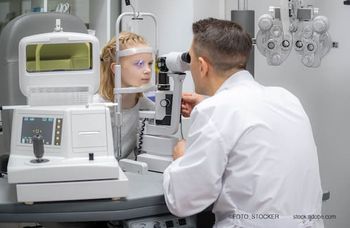
Functional imaging of ocular circulation under development
Functional optical coherence tomography characterizing global and local circulation in the retina and optic nerve head shows promise for improving the diagnostic and prognostic evaluation of glaucoma.
Take-home message: Functional optical coherence tomography characterizing global and local circulation in the retina and optic nerve head shows promise for improving the diagnostic and prognostic evaluation of glaucoma.
By Cheryl Guttman Krader; Reviewed by David Huang, MD, PhD
Portland, OR -Findings from research with functional optical coherence tomography (OCT) that characterizes global and local circulation in the retina and optic nerve head suggests this technology has great potential for improving glaucoma diagnosis and monitoring, according to David Huang, MD, PhD.>
“OCT is being used today for structural analysis of retinal nerve fiber layer (RNFL) thickness and ganglion cell complex (GCC) thickness,” said Dr. Huang, Peterson Professor of Ophthalmology and professor of biomedical engineering, Casey Eye Institute, Oregon Health and Science University, Portland, OR.
However, it has limited sensitivity for detecting early glaucoma, and the structural OCT measures correlate only moderately with visual field loss, he noted.
“Using OCT to assess function, we have found that total retinal blood flow and peripapillary vessel density is decreased in glaucomatous eyes, and that the flow measures are highly correlated with the visual field and only moderately correlated with OCT-measured structural loss,” Dr. Huang said.
“Therefore, we believe that the reduced blood flow in glaucoma reflects some pathophysiologic factor that correlates very closely with the visual field, such as dysfunction in the neural structures, and that measurements of blood circulation can detect loss of function of nerve fibers or ganglion cells before thinning occurs. This would allow for earlier diagnosis of glaucoma,” he said.
Because of the very tight correlation between blood flow measurements and visual field, this technology has the potential for improving glaucoma monitoring, even in eyes with more advanced disease where the ability to detect progression based on further structural thinning is limited because of the “floor effect,” he continued.
In 2009, Dr. Huang and colleagues began to develop Doppler Fourier-domain OCT for calculating total retinal blood flow. Their research showed that compared with eyes of normal controls, total retinal blood flow as well as vascular caliber (both arterial and venous area) was significantly lower in eyes of patients with glaucoma.
More recently, their work is focusing on OCT angiography that is able to map blood flow in the retina around the optic nerve and at multiple levels of the optic nerve head itself using a novel software algorithm (split-spectrum amplitude-decorrelation angiography [SSADA].
In an initial study, the optic nerve head in 24 normal subjects and 11 patients with glaucoma was imaged using a swept-source OCT system. Its results showed that blood flow in the superficial disc and in the deep laminar cribosa was reduced in the glaucomatous eyes compared with the controls [Ophthalmology . 2014;121:1322-1332].
In addition, there was tight correlation between the disc flow index and the visual field pattern standard deviation.
In a subsequent pilot study [JAMA Ophthalmol . 2015. Epub ahead of print July 23, 3015], the optic disc was imaged (3- x 3-mm scan) with a commercially available spectral domain OCT platform (RTVue-XR Avanti, Optovue) and using the SSADA software to evaluate peripapillary retinal perfusion and vessel density. (The SSADA software for the SD OCT platform is available internationally [Angiovue, Optovue] but not yet FDA approved).
“To our knowledge, this is the first attempt to use OCT for quantitative evaluation of the peripapillary retinal vasculature in glaucoma,” Dr. Huang said.
The study, which included 12 glaucomatous eyes (9 with perimetric glaucoma and 3 with pre-perimetric glaucoma) and 12 age-matched normal eyes, found that peripapillary flow index and peripapillary retinal vessel density were significantly reduced in the glaucomatous eyes compared with the controls. Again, both functional parameters were highly correlated with visual field pattern standard deviation.
Visualization of focal defects in the microvascular network around the disc was possible using a 4.5- x 4.5-mm map of perfusion in the nerve fiber layer. Analyses of those images showed that the area of peripapillary nonperfusion matched the visual field defect and NFL loss, but also was present in some eyes with a visual field defect before a NFL defect was visible.
“Of course, all of our clinical studies so far are small, cross-sectional investigations,” Dr. Huang said. “Now, a full-scale longitudinal study is needed to assess fully the potential of OCT angiography for the early diagnosis of glaucoma and for predicting and monitoring glaucoma progression.”
David Huang, MD, PhD
This article was adapted from Dr. Huang’s presentation at the 2015 ASCRS Glaucoma Day. Dr. Huang has significant financial interests in Optovue and Carl Zeiss Meditec.
Newsletter
Don’t miss out—get Ophthalmology Times updates on the latest clinical advancements and expert interviews, straight to your inbox.



















































.png)


